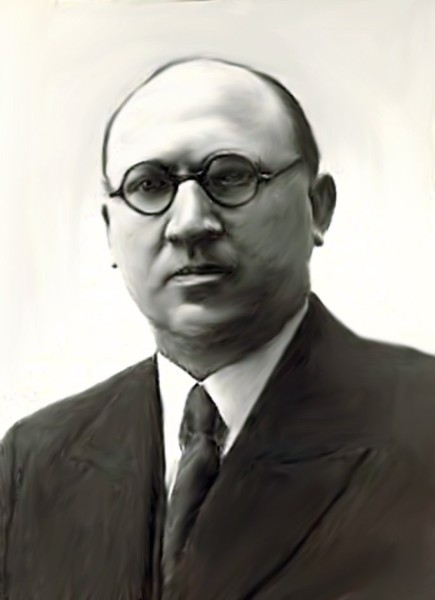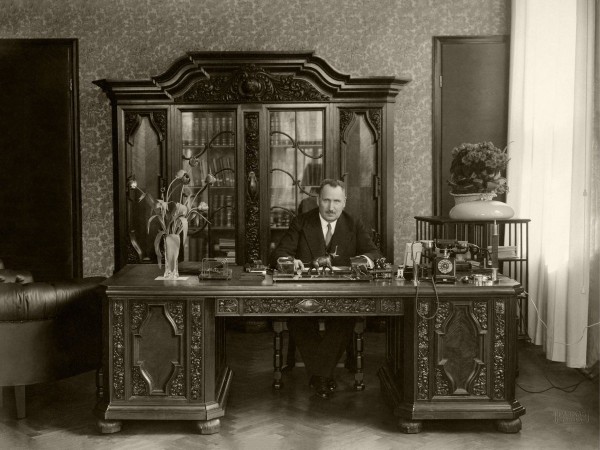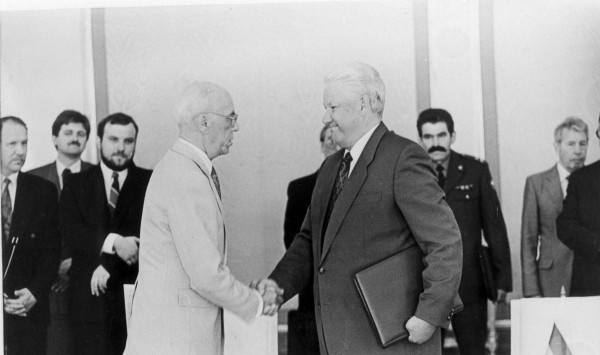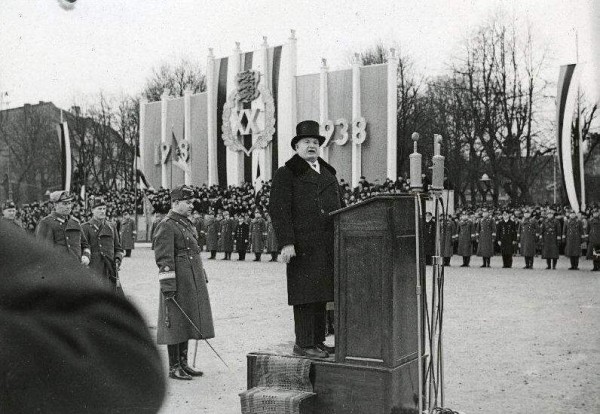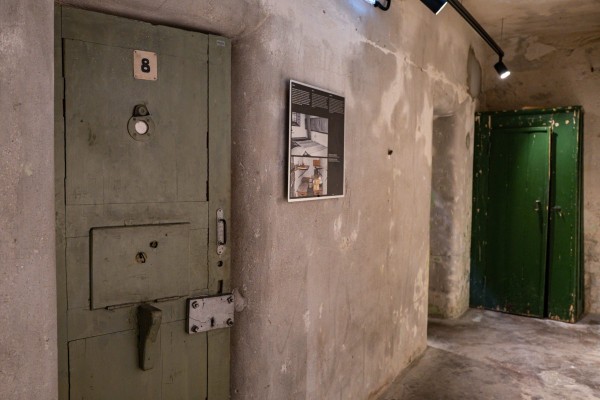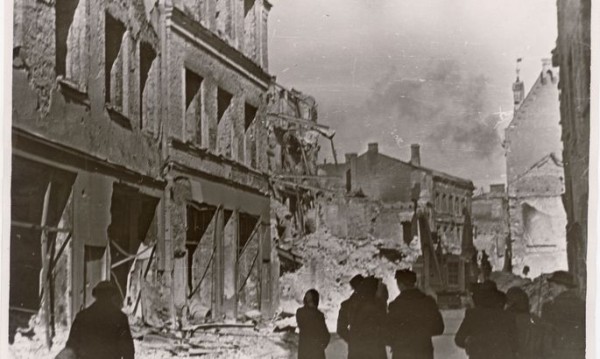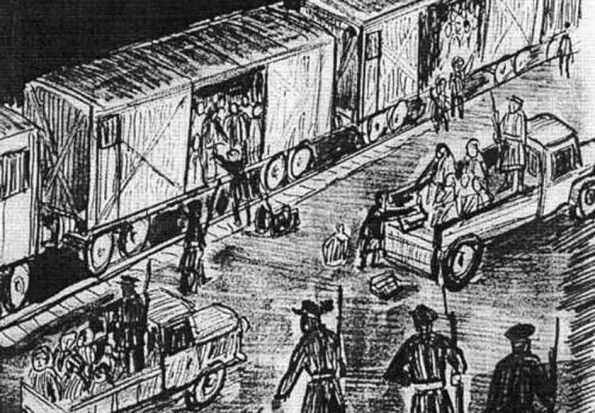
Mass deportations in Estonia A drawing made by Hilda Orn, who was a teenager when she was deported with her family. Her father an engineer died that winter. She, her sister and her mother were not allowed to leave the 'settlement' until 1956. Soon after Poland was divided between Germany and Russia in 1939, the Soviets had extended their reach to the other Baltic states. Only Finland was in a position to resist militarily. For Estonians, Latvians and Lithuanians the Soviet system meant a murderous dictatorship. The 14th June 1941 is remembered in Estonia as the day that Stalin began the mass arrest of thousands of ‘suspect’ individuals and their families: It was half past eight on a fine sunny morning on the 14th of June 1941. I remember having spent a restful night in bed. Somehow the fear of the N.K.V.D. had not weighed on me as heavily as usual. Both, my wife and I, felt refreshed. We went downstairs for breakfast. The dining room was unusually deserted. The food on the table was untouched. My parents-in-law were mysteriously nowhere in the house. This was unusual indeed at this hour. We thought of even going to look for them in the garden. We had not gone far when we came across the maid. She looked very pale and startled, with feverish eyes. “The Professor and the Mrs. have gone out,” she said. “There was a telephone message.” “What telephone message?” asked my wife. “From the country…from your uncle’s farm.” Her voice was unsteady. “It was not your uncle who telephoned…it was a relative. Something terrible has happened. They have all been arrested, all of them…your uncle, aunt, cousin and the cousin’s wife together with their little son and Vilma. The N.K.V.D. came for them.” We were speechless with horror. We had been fearful but we had not feared this. They were just farmers, quite unpolitical, but excellent and most successful farmers. They had never found it necessary to disguise their patriotism. My wife’s uncle Alfred was seventy and his grandson only two. Vilma, his daughter, only a school-girl of sixteen who had left us just over a week ago to spend the vacation at home. What was the sense of arresting them ? “They were taken out of their beds and bundled into lorries and taken to the railway station. There they all were locked into cattle cars. Nobody may go near them. “Our neighbors have also been arrested. Among with them the new lawyer and his wife in number 6 and Justice Baarman with his wife and little daughter in number 2. Awful things are going on.” This was too much for me. It was impossible suddenly to think of breakfast. I rushed out of the dining room into the hall and from there into the street. It was most urgent for me that I should know what was taking place. It was usually one of the quietest streets in the town of Tartu. But today people were moving about in small groups and talking furtively and looking very scared. And there, just before me, a lorry passed on the street. There were three uniformed men in it. An N.K.V.D. man, a soldier with a rifle and a militia man together with some ten or twelve civilians…men, women and children. They looked desperate. They had bundles with them. Everybody on the street could not help but glance in their direction. From “Behind the Mask” Deportation in Estonia – Reminiscences by Ants Oras M.A.B Litt. / Oxford England translated by Enn Lepist. The families were shipped off in cattle cars to the farthest reaches of Siberia where they were ‘resettled’ .Thousands died from cold and hunger. Nearly 10,000 people were deported from Estonia during the first wave of arrests on 14th-17th June and around 1,000 more soon afterwards. No doubt more would have followed had not events intervened on the 22nd. Similar operations took place in the other Baltic states where the Soviet state had a very broad definition of people who were suspect. The following categories were to be deported from the Baltic countries: 1. All members of the dissolved bourgeois parties and of bourgeois and cultural organizations; all Social-Democrats, Syndicalists and Trotskyites. 2. Officials, judges, officers and police officials of the previous regime. 3. Participants in the was against the Bolsheviks – styled the “civil war” of 1918 –1920. 4. Former members of the Communist Party who had left the Party or had been expelled. 5. Refugees and immigrants. 6. Former employees of foreign diplomatic missions and representatives of foreign firms. 7. People maintaining correspondence with foreign countries. 8. Relatives of political fugitives. 9. Clergymen and active members of religious organizations. 10. Aristocrats, landowners, industrialists, businessmen, bankers and restaurant proprietors. All these categories were to be removed to the bleakest regions of Russia together with their families. “This goes without saying,” a Communist in my country remarked after the event, “for their families would naturally have resented what happened and as a result they too had to be eliminated. For more of Ants Oras story see Behind the Mask. The Estonian Ministry of Foreign Affairs has a general background factsheet. The Museum of Occupations has a photo essay on the deportations and the conditions that deportees lived in in Siberia. - See more at: http://ww2today.com/14th-june-...
Advertisement / Reklaam
Advertisement / Reklaam






